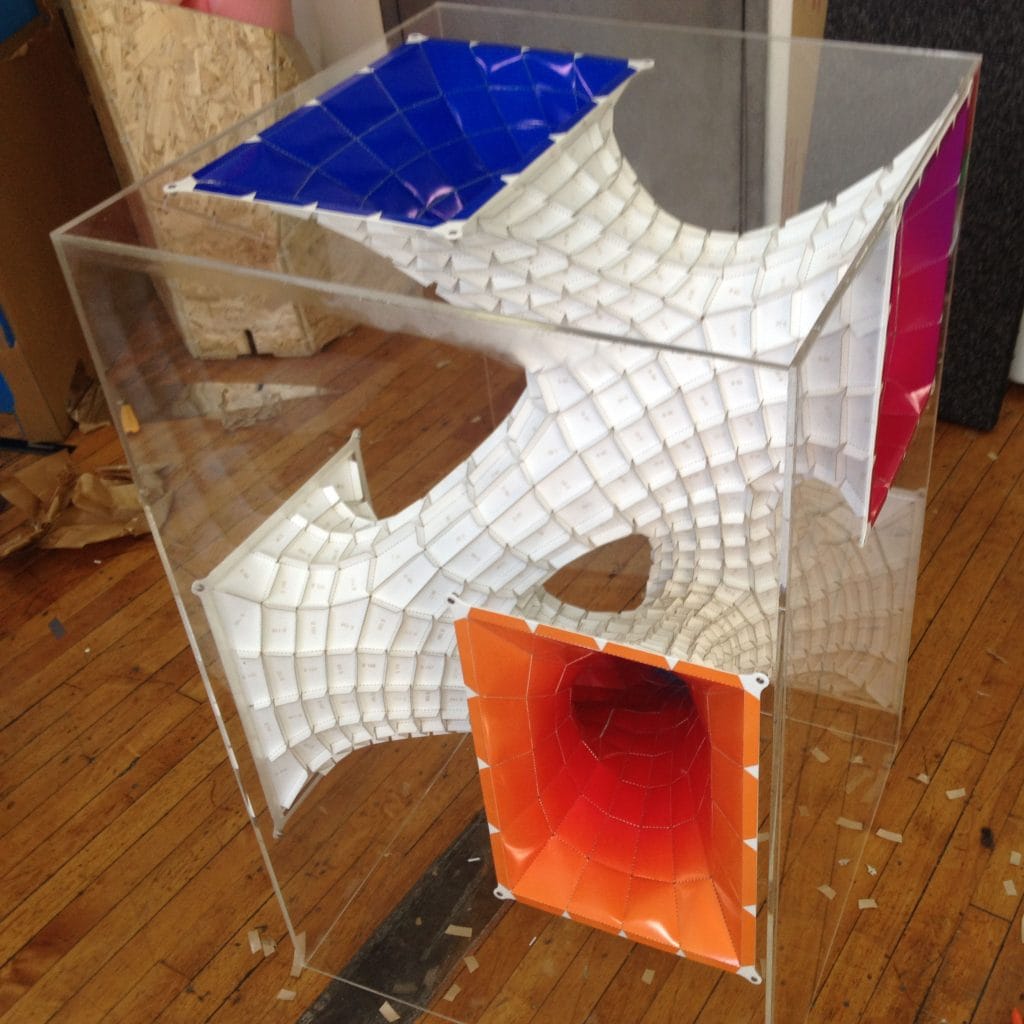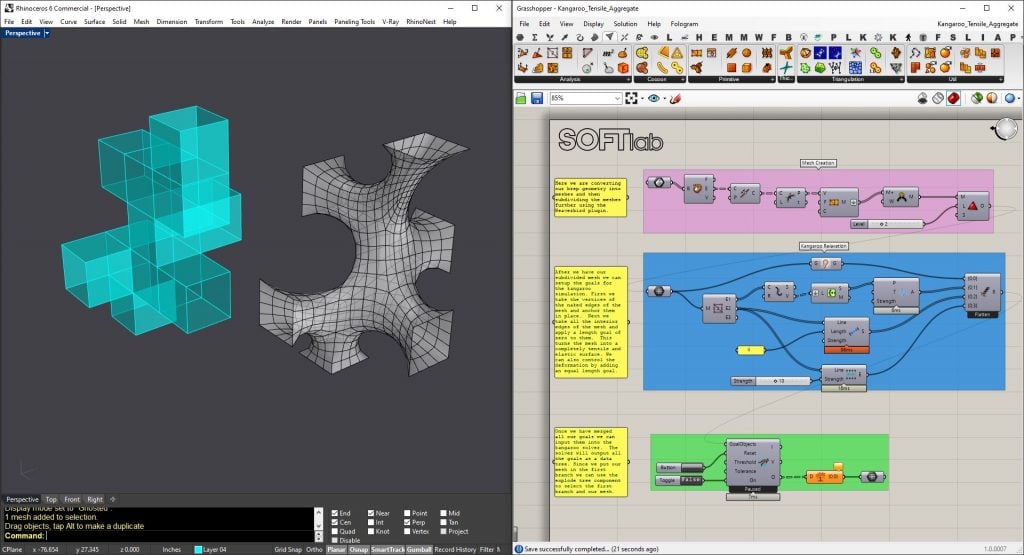
Frei Otto soap film model via Archdaily

Here is a definition that creates a complex tensile surface out of a simple aggregate of boxes. To run this definition you’ll need to have the Weaverbird and Kangaroo2 plugins installed. The script comes with some example geometry for input but you can easily create your own by aggregating boxes together in Rhino , booleaning them together and then exploding and deleting faces where you want the openings to be.

You can download the above definition here: Kangaroo_Network-Form-Finding.zip
The first part of this definition takes the surfaces and converts them into meshes that are then subdivided. The amount of subdivision is variable and is always a balance between the fidelity of the final geometry and its feasibility since each face will eventually become a discrete panel.
The second part of the script is where we set up our goals for the kangaroo simulation. The first thing we want to do is to attach the geometry we are simulating using the show component. Next we define where our geometry is anchored by extracting the vertices from the naked edges of the mesh. The last step is to apply a spring force to all the internal edges of the mesh by applying a length goal of zero to each edge. The amount of deformation can be balanced by applying an equalizing force to the internal edges. After the simulation is run the mesh can be baked out to be used later for coloring and panelizing.